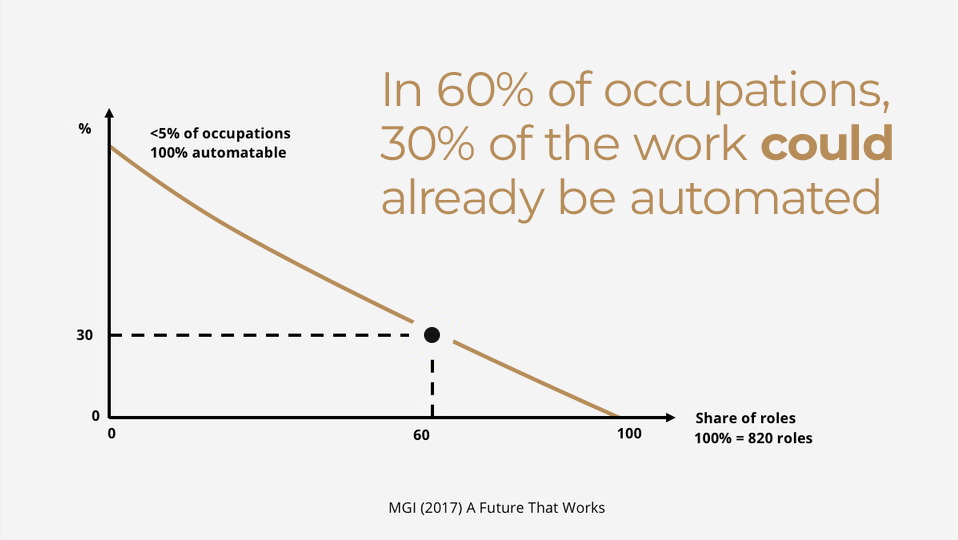Why Knowledge Work Is An Endurance Activity

Have you ever thought about planning your effort, and the type and timing of your cognitive activities, to optimise your wellbeing and performance? As life expectancy increases, and retirement age is delayed, maintaining and even enhancing performance, over the long-haul, is becoming increasingly important in knowledge work. We need to start considering our rhythms of work, rest and peak performance, and develop a plan for cognitive endurance.
15 years ago, I was a racing cyclist, and had recently moved to France to follow my dream of becoming a professional cyclist. I raced full-time at elite-level, for a number of years, but my cycling career didn’t quite reach the heights that I hoped. I returned to the UK, to study sports science, and eventually set up my own coaching business, primarily working with amateur cyclists. Many of my clients had very demanding jobs in London, where my business was based. In the small amount of spare-time they had outside their work as solicitors, architects, management consultants and finance professionals, they trained for very challenging cycling events.
“I came to view knowledge work as a cognitive endurance activity”
I diligently created their cycling training sessions, but soon realised that I knew very little about their work-days, despite the fact that the stress and load they were accumulating during the 12+ hours in the office seemed to be having a significant impact on their cycling performance. I became curious about what was going on in their work-day, which was the genesis of my fascination with knowledge work. I began to use tools and frameworks from sports science to try to understand and quantify knowledge work; initially using self-report measures of stress and load, moving on to integrate objective and physiological measures such as sleep, heart rate and more recently, cognitive performance. In time, I came to view knowledge work as a cognitive endurance activity, which forms the basis for much of my work and research today. While most of the participants in my studies are knowledge workers, the science of endurance sport continues to influence my thinking. There are many human performance principles to discover, and lessons that we can learn.
Planning For Physical Endurance
In 2015, physiologists Julien Pinot & Frederic Grappe published findings from a 6-year monitoring study focussing on the training and performance of a professional cyclist, Thibaut Pinot. This period included the 2012 Tour de France where, despite being the youngest rider in the race, Thibaut Pinot finished 10th overall. He was the youngest rider to finish in the top 10 since 1947. This was an incredible feat of physical endurance and the study, published in the Journal of Sports Sciences, highlights the significant improvements in performance Pinot made each year. Of particular interest to many coaches was the training volume and the distribution of Pinot’s effort during the six-seasons described in the paper.
The authors note that “Programming the Training Load is very important to enhance the athlete’s performance, and hence the necessity to quantify it.” Between the ages of 18 to 23, Pinot’s annual training volume increased from 515 hours to 942 hours, an average of 18.1 hours per week. However, volume was only one aspect of his carefully planned training programme. Each season followed a similar structure:
- Preparation: 12 weeks, focussed on general preparation, cycling workouts at low to moderate intensities, and strength training.
- Competition: 3 cycles, each with a specific focus, aiming to improve peak performance level.
- Rest: Between 4 to 6 weeks, to recover and rebuild.
Pinot and his coach thought carefully about the variations and rhythms in volume and intensity in each day’s training, over the whole year, and even in the context of his career, enabling Pinot to improve his record power output – the best power he was able to produce in a four-hour effort in this case – by 32%, between 2008 and 2013.
We Will Live & Work For Longer Than Ever
Maintaining and even enhancing performance, over the long-haul, is becoming increasingly important in knowledge work, but we rarely consider variations and rhythms in the volume and intensity of cognitive effort. How often do you think about pacing yourself at work? How regularly do you consider how you will distribute your energy, to sustain high performance, and proactively schedule phases of rest, preparation and peak performance?
Global life expectancy has doubled since 1900 and retirement age is increasingly delayed. As working life extends, employees need to find ways to maximise health-span; the functional and disease-free period of life, but the requirement to work for longer is not the only pressure. In most jobs, 30% of the work could already be automated. Many jobs involving manual or routine tasks will be replaced, in whole or in part, by automation. Remaining human roles will put a greater emphasis on sophisticated and effective cognitive functioning. These shifts should encourage us to be more proactive about maintaining our health and enhancing our cognitive performance.
“Wellbeing, including adequate sleep, managing stress and positive mood, are some of the most significant drivers of cognitive performance”
Preliminary analysis of data from a recent study, in which I gathered over 1000 observations of knowledge worker health behaviours and cognitive performance, suggests that wellbeing, including adequate sleep, managing stress and positive mood, are some of the most significant drivers of cognitive performance. At an organisational level, employee health and well-being will become a business value of strategic importance, and a source of competitive advantage.

To paraphrase journalist Sydney J. Harris, the real danger is not that machines will keep working like humans, it’s that humans will keep trying to work like machines.
A Plan For Cognitive Endurance
We need a framework to plan for cognitive endurance, in a similar way that we plan for physical endurance. On average, a full-time employee in the EU works 40.3 hours per week; that’s 2096 hours per year – more than double the hours Pinot spent on his bike. Our working hours will not be allocated efficiently and effectively by chance, and it’s likely that the approach that works for one person, may not be ideal for someone else. We need to start considering ‘load’ in our workdays, working weeks, months and even years.
Cycling effort is relatively easy to measure, using power meters or heart rate, for example. Knowledge work is slightly more complex to record. In my research, I use smartphone-based cognitive tests, for regular assessment of cognitive performance, as well as an EMOTIV EPOC headset, to measure brain activity in real time. While most of us rarely consider rhythms and the distribution of effort in knowledge work, cognitive performance can vary by around 20% during the average day. In fact, circadian variation (the oscillations in processes that occur over a 24-hour period) in cognitive performance accounts for around 20% of the variance in laboratory studies of cognitive performance, and 40% in field studies.

‘Chronotype’ relates to our circadian rhythm and describes our ‘peak periods’ and tendency to sleep at a particular time during a 24-hour period. Individuals are often classified according to three chronotypes: ‘morning-type’, ‘neither-type’ or ‘evening-type’. Around 40% of the adult population is classified in one of the two of the extreme groups (morning type or evening type), while 60% of us fall somewhere in-between. A later study, used to test a measure called the Circadian Energy Scale (CIRENS), was consistent with this, concluding that 17.3% were morning types, 19.6% were evening type, and everyone else fell somewhere in-between.
Develop a plan for
cognitive endurance
Download our high performance behaviour check-list:
Peaks, Valleys and Rebounds
Whatever the case, most of us experience the day in three phases: a peak, a valley and a rebound. Our chronotype can determine the order that we experience these three phases, but each phase has distinct characteristics. The peak is generally the best time for focus, complex analytic and productive work, with minimal distractions or interruptions. The valley is the ideal opportunity for rest, recovery and reflection. The rebound is a good time to get on with the menial tasks and switching work, such as e-mail and administrative tasks, that most knowledge worker’s need to complete at some point during the day.
We should consider what preparation, peak performance, and rest mean in knowledge work. We need to start thinking more clearly about where to focus effort, when to rest, and learn to discover our own rhythm of work and rest.
Cognitive Gears: Planning Load In Knowledge work
Inspired by the concept of ‘training zones’ in endurance sport, I created a framework called ‘cognitive gears’ as a way to create a plan for cognitive endurance. Like Pinot’s coaches, I’m increasingly convinced that programming load in knowledge work is an important part of enhancing the cognitive athlete’s performance, as well representing a means to support health and wellbeing.
Each cognitive gear represents a type of knowledge work activity. Low cognitive gear represents rest and recovery, high cognitive gear represents periods of intense focus, with just the right amount of time pressure, and the middle cognitive gear represents time spent on menial tasks and switching work.

When you consider these cognitive gears, how is your cognitive work distributed over the average workday. Most of us find that we spend the majority of our time stuck in cognitive middle gear. 79% of people check their smartphone within 15-minutes of waking up, then the trend continues, as we are continuously interrupted (once every 11 minutes for the average knowledge worker), check-in on our communication tools (once every 6-minutes) before collapsing on the sofa and watching TV, while switching between the big-screen, our smartphone and our tablet computer, an average of 21 times per hour. This is not a plan for cognitive endurance.
The cognitive gears framework provides a simple framework to think about the way we are living and working, create more distinct periods of work and rest, and synchronise each phase of our day with the type of knowledge work activity it’s best suited to. This begins by paying attention to when we feel at our best, and thinking about our rhythms of peak, valley and rebound (or rebound, valley and peak, if you’re among the 20% of the population who prefer later nights and lie-ins).
High Cognitive Gear: When And Where To Focus Effort
High Cognitive Gear is akin to Peak periods in an endurance athlete’s training programme. For High Cognitive Gear, consider the timing of the peak in your day: when do you feel at your best? Synchronise high gear work with this period and focus your effort on demanding, complex tasks that require sustained focus and minimal interruptions. Create positive time pressure during this time, perhaps by the Pomodoro time management technique. Create a precise goal for your time, the break your peak period into blocks of 25-minutes of uninterrupted work, followed by 5-minute breaks. This technique seems to be able to reduce procrastination, avoid distraction and help us to achieve states of flow and focus. Also, don’t rely on your self-control to resist distraction and interruption. Engineer an environment for focus, perhaps by moving to a quiet room or booth, or use noise-cancelling headphones.
Low Cognitive Gear: Resurrect The Lunch Break
For Low Cognitive Gear – when are where to rest, recover and reflect – try to schedule Low Cognitive Gear time to coincide with the valley in your day. The key word here is ‘schedule’. We fill our calendars with meetings, but when was the last time you scheduled a break, or recovery period, in your day? Various forms of evidence seem to suggest that the most effective breaks are active, social and natural: go for a walk with someone you like, look at the sky and the trees. Before its recent extinction, I think it was commonly known as a ‘lunch break’. Finally, perhaps most importantly, sleep 7-9 hours per night. It’s the most potent and proven performance enhancer that we have available.
Middle Cognitive Gear: Don’t Start Your Day On Someone Else’s Schedule
Middle Cognitive Gear represents menial tasks and switching work that forms at least part of the average knowledge worker’s day. Accept that it’s unlikely that we can eliminate this Middle Gear work completely, and it may not even be helpful to do that. In fact, we could consider Middle Cognitive Gear as preparation time in our cognitive performance plan. Use this time to ‘clear the decks’ and complete the small tasks, that hang around, freeing you to focus, or rest. However, we would likely benefit from managing middle gear proactively. Begin by setting boundaries for middle cognitive gear activities, so that this work does not diffuse into all of our conscious hours. During the rebound, our inhibitory control is often reduced, which makes it more likely that we will switch tasks anyway, so synchronise middle-gear work with the rebound in your day. Lastly, for Middle Cognitive Gear, don’t be among the 79% of people who start their day by checking their smartphone: starting the day with e-mail is starting on someone else’s schedule. Find and follow your own rhythm.
“People who regularly follow more human rhythms of work and rest exhibit 10-15% better cognitive performance, relative to people who ignore them”
Pilot data from a recent study I conducted suggests that people who regularly follow more human rhythms of work and rest exhibit 10-15% better cognitive performance, relative to people who ignore them. It’s tempting to look for a hack and quick fix, but we need to take a longer-term view, which means thinking more carefully, and proactively, about periods of effort and recovery. The impact of a more human approach to performance could lead to us rediscovering real focus, reduced stress and enhanced recovery. We need a brain and body to go the distance. Knowledge work is a cognitive endurance activity.
Want to Hear More?
I will be speaking more on this topic at one of Europe’s largest business conference, the Nordic Business Forum, this week. If you happen to be in Helsinki but don’t have a ticket for the event, you can come by to the newly opened St George hotel, follow a live stream of all of the speeches and meet some of my colleagues from Hintsa.



